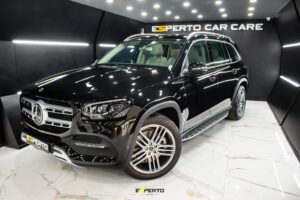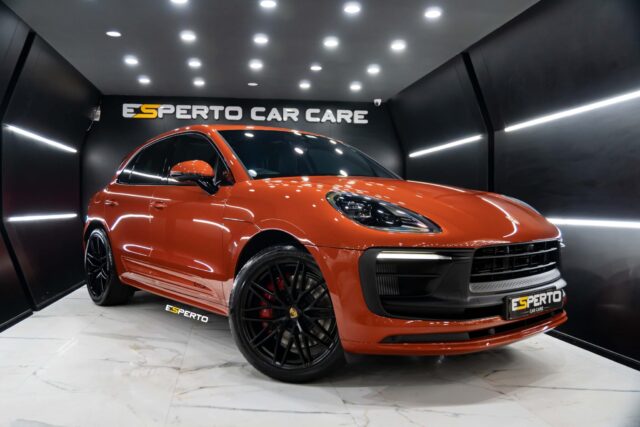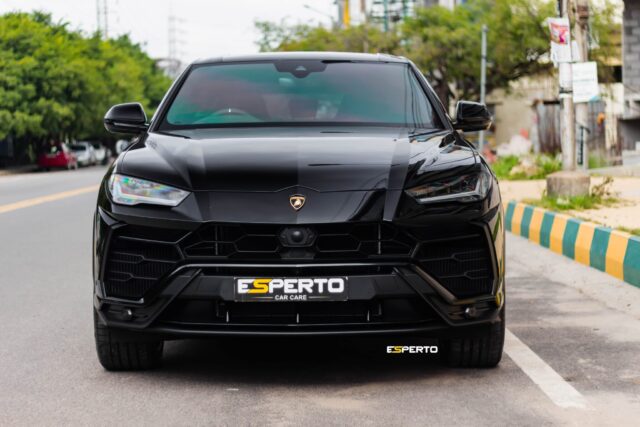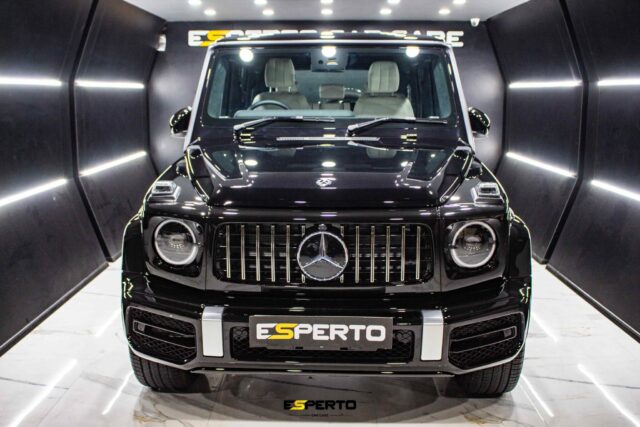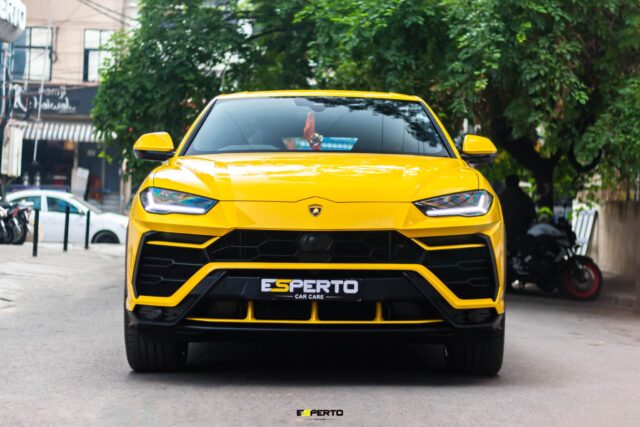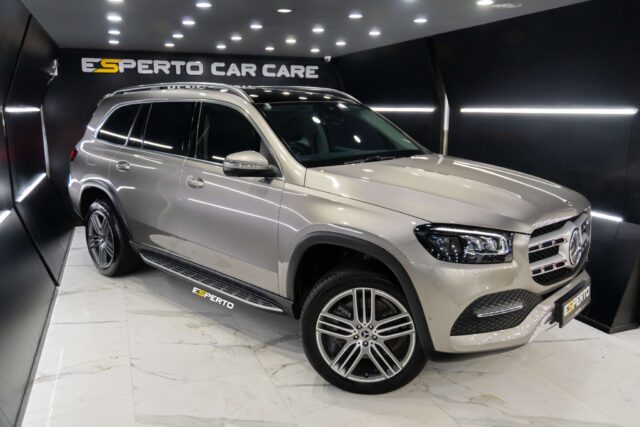Car Wrap vs. Ceramic Coating: Which is the Best Choice for Your Vehicle?
Deciding how to safeguard your car’s paint can be challenging. Consider whether a car wrap or ceramic coating is the superior choice for your vehicle. Both alternatives have advantages, but they fulfill different roles and provide variable degrees of protection. Explore Custom Car Wrap Solutions by Esperto for a stylish and protective option tailored to your needs.
This decision influences how your car appears and its resilience against daily wear and tear.
Worth highlighting is that ceramic coatings form a water-repellent surface on your car’s exterior, simplifying the cleaning and upkeep process. This article will examine the contrasts between car wrap and ceramic coating, including their lifespan, protective capacities, and economic viability.
Our goal is to assist you in making a well-considered decision about which option aligns best with your requirements for keeping your car in top-notch condition. Prepare to understand all that’s necessary about these two favored selections for safeguarding your vehicle’s paint.
What is the Difference Between Car Wrap and Ceramic Coating?
Following the introduction, it’s crucial to outline the differences between car wrap and ceramic coating. Car wraps involve adorning your vehicle with vinyl wraps, presenting an avenue for altering its look while providing a defensive layer against environmental factors like rock chips and harmful UV rays.
This strategy safeguards your vehicle’s paint and also enables customization regarding colors and finishes. Conversely, ceramic coatings establish a chemically bonded defensive shield on your car’s surface.
This liquid polymer augments gloss offers superior defense against scratches and possesses hydrophobic properties, simplifying cleaning.
The primary differences reside in their methods of protecting your vehicle. Vinyl wraps serve as a physical barrier defending against mechanical damage such as scratches or minor dents, while ceramic coatings offer enduring chemical resistance against contaminants and UV damage that might dull the original paint over time.
Vinyl wraps can be updated or removed without causing harm to the original paint, providing an alternative for those who regularly refresh their car’s appearance. Ceramic coatings operate by bonding with the vehicle’s paint on a molecular scale for improved aesthetics and reduced maintenance needs, proving efficient in preserving showroom gleam longer than conventional waxes or sealants.
Understanding car wraps and their applications
Vehicle wrappings act as a safeguarding layer, defending your car’s paint job from damage wrought by the sun, scratches, and exterior factors. These wraps are available in a multitude of colors and finishes, permitting car owners to alter their vehicles’ look without making lasting adjustments.
They are essentially sizable vinyl stickers placed over the original paint of the vehicle. This method provides a dual advantage: it protects and also offers chances for personalization or advertising. The Purpose of Car Wrapping extends beyond aesthetics — it also plays a crucial role in preserving the resale value of the car by shielding it from everyday wear and UV damage.
A skillfully applied vehicle wrap has the capability to morph your vehicle into a mobile advertisement or a work of art, while preserving the original factory paint underneath it.
The effectiveness and versatility of this method have made it a favorite among both car enthusiasts and business owners. It wards off physical damage and UV rays while presenting the vehicle in a new light.
The application of top-tier PPF (paint protection film) in conjunction with these wraps can provide heightened durability and defense for each component of your car, from the front bumper to the rear.
Car detailing services often advise the use of wraps as they require a small amount of upkeep but provide durable protection against daily wear and tear.
Exploring ceramic coatings and their benefits
Ceramic coatings provide a protective layer for your car’s paint, acting like an invisible shield. This liquid polymer bonds with the vehicle’s surface to create a hydrophobic (water-repelling) barrier.
This makes cleaning easier and prevents dirt, grime, and chemical contaminants from bonding to the paint’s surface. Unlike traditional wax, which needs reapplication every few months, the ceramic coating provides long-lasting protection.
Its durability can withstand environmental elements for several years, making it a smart investment for maintaining your car’s showroom shine.
The advantages of ceramic coating extend beyond simply aesthetic appeal; it also offers superior protection against UV rays, which can cause fading over time and oxidation over time. Furthermore, this coating adds an extra level of defense against scratches and swirl marks from frequent washing or direct contact with minor abrasives.
With enhanced gloss and minimal maintenance required, ceramic coatings keep cars looking brand new while saving owners time and effort in care routines. By choosing ceramic coating or PPF (paint protection film), owners secure their vehicles’ exteriors against physical damage and the tests of time.
Critical differences in protection and durability
Car wraps and ceramic coatings offer two distinct approaches to protecting your car’s paint, each with its strengths. Car wraps provide a physical barrier against environmental hazards such as rock chips, minor scratches, and UV rays. This makes them an excellent choice for rust protection with wrap, especially in areas where moisture and road salt are common contributors to corrosion. On the other hand, ceramic coatings create a hydrophobic surface on the vehicle that repels water and dirt, making cleaning much more accessible.
While not as thick as car wraps, they offer unmatched protection against chemical contaminants and can enhance the vehicle’s gloss.
Choosing between these options depends on what type of threats your car faces most often. If you’re worried about scratches or dents from daily use, a car wrap might be your best bet.
However, if keeping your car clean and glossy with less effort sounds appealing, a ceramic coating could be more suitable. Next up is how paint protection film (PPF) compares to these options in safeguarding your vehicle’s exterior.
How Does PPF Compare to Ceramic Coating?
Paint Protection Film (PPF) provides a thick, physical barrier to shield your car’s paint from rock chips, scratches, and environmental factors. This film is virtually invisible and can even self-heal minor scratches with heat exposure.
On the other hand, the ceramic coating offers a liquid polymer layer that binds with the vehicle’s paint, creating a hydrophobic surface. This makes it easier to clean off dirt and grime while protecting against UV rays that can fade paint over time.
PPF offers superior protection against physical damage, while ceramic coating provides long-term resilience against environmental elements.
Choosing between PPF versus ceramic coating depends on what you prioritize for your car care needs. If guarding against physical impacts like PPF does sound crucial, then PPF emerges as the better option.
Meanwhile, if maintaining appearance and ease of cleaning are top priorities, then the hydrophobic nature of ceramic coatings might be more appealing. Both options significantly enhance your vehicle’s protection but cater to different aspects of vehicle care.
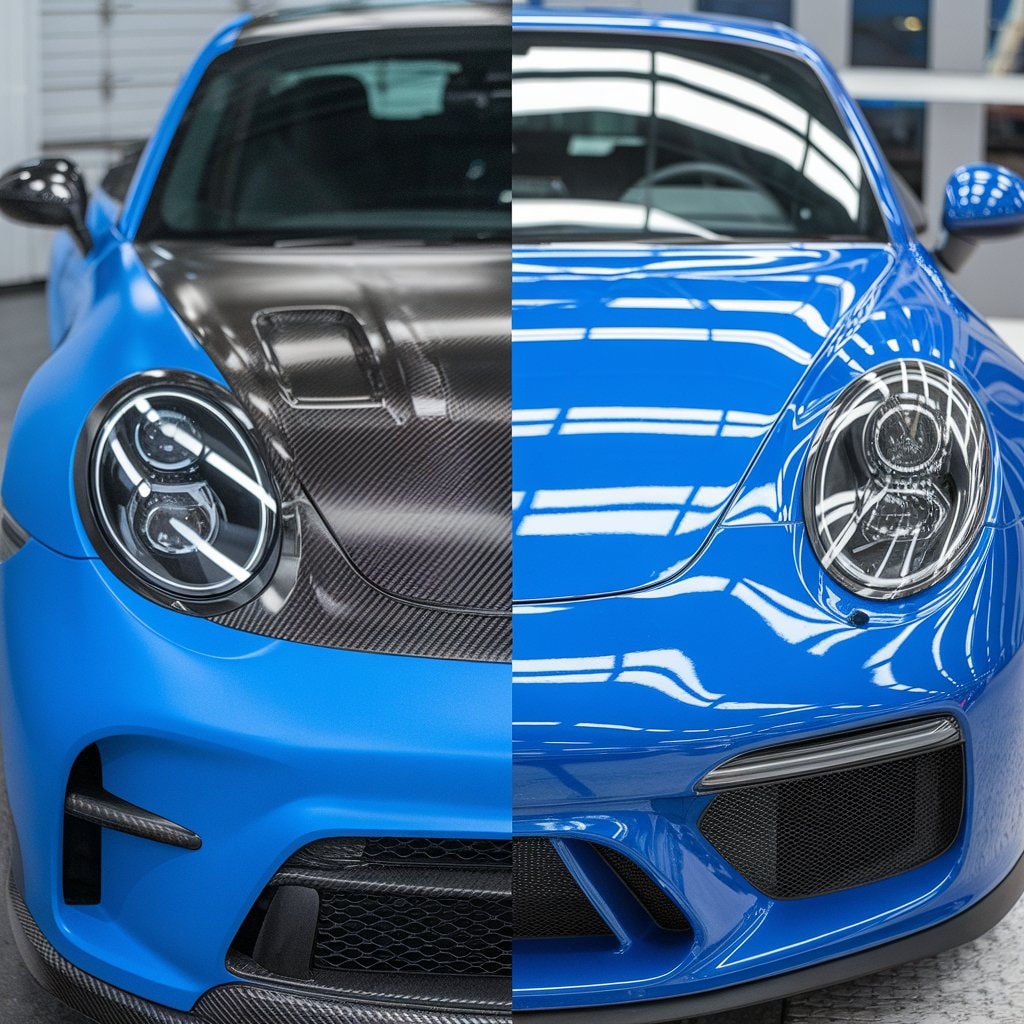
The function of paint protection film in protecting a vehicle care
Vehicle care dramatically benefits from the use of paint protection film (PPF), which serves as a shield for the car’s paint against environmental harm and routine wear and tear. This firm, long-lasting film stands up against the common culprits of exterior damage, such as rock chips, scratches, and UV rays.
It acts as an extra defense layer, helping your vehicle retain its immaculate look for a greater duration compared to those lacking it.
Deciding on PPF for your car implies choosing enduring safeguarding that maintains the fresh appearance of the paint. High-quality PPF comes with the ability to repair itself that not only provides protection but also contributes to retaining the car’s value over its lifespan.
With expert fitting, this almost unnoticeable film integrates smoothly with your vehicle’s paint surface, maintaining its visual appeal while providing unparalleled physical armor against weather and road waste.
Benefits of ceramic coating for car owners
Ceramic coating offers car owners long-term protection for their vehicle’s paint. This liquid polymer forms a chemical bond to the surface, forming a protective layer that is hydrophobic.
This means your car will repel water, simplifying cleaning and preserving its shine longer than unprotected surfaces. Unlike waxing, ceramic coatings provide superior protection against UV rays, helping to prevent the paint from fading over time.
Applying ceramic coating also protects your vehicle from minor scratches and contaminants like bird droppings and tree sap that can damage the paint. It’s thicker than traditional waxes or sealants, offering better resistance against environmental factors.
For car enthusiasts who value aesthetics as much as protection, this treatment enhances your vehicle’s appearance while protecting it from daily wear and tear.
Exploring how these benefits compare to other protection options leads us to discuss Paint Protection Film (PPF).
Choosing between PPF vs ceramic coating for your car
Choosing the proper protection for your car involves understanding the unique benefits of both PPF (paint protection film) and ceramic coatings. These treatments offer different methods of shielding your vehicle’s paint from damage and environmental factors.
- Paint protection film, or PPF provides a physical protect against scratches, rock chips, and various other forms of damage of physical damage. This thick film adheres directly to the surface of your car.
- Ceramic coatings create a hydrophobic layer on your vehicle that repels water, dirt, and some chemicals. This makes your car easier to clean and helps maintain its shine.
- PPF is best for those seeking superior protection against physical impacts. It’s precious in areas prone to rock chips or where the roads are rough.
- If UV protection and maintaining gloss are your main concerns, the ceramic coating might be the better choice. It offers excellent defense against the sun’s harmful rays, keeping your car’s color from fading.
- In terms of longevity, PPF often lasts longer than ceramic coatings. A quality installation can protect your car for years to come without needing significant maintenance.
- Ceramic coatings require less initial maintenance than PPF but may need reapplication more frequently to maintain their protective properties.
- Paint correction is often recommended before applying either PPF or ceramic coating to ensure the vehicle’s surface is free from imperfections. This step enhances the final look by removing any existing scratches, swirl marks, or oxidation.
- Installation precision plays a crucial role in both options’ effectiveness. Professional expertise ensures that either treatment covers all necessary surfaces without leaving residue or gaps.
- For those concerned about aesthetics along with protection, ceramic coating enhances the vehicle’s existing paintwork with an additional shine, whereas PPF preserves it in its current state.
- Considering the cost, PPF is generally more expensive upfront due to its thicker material and labor-intensive application process compared to most ceramic coatings.
- Finally, location and usage heavily influence whether PPF or ceramic coating suits you best; frequent off-road use or high-debris areas lean toward PPF for its durability against physical threats.
Moving on lets discuss if combining both these protections could offer even better results for caring for your vehicle’s exterior.
Which Offers Better Protection: car wrap or Ceramic Coating?
Car wraps and ceramic coatings serve different purposes for vehicle protection. Car wraps offer a physical barrier against scratches, rock chips, and the sun’s harmful UV rays. They provide superior protection on the whole car by covering it with a thick, durable film.
On the other hand, ceramic coatings give your car paint a hydrophobic layer that repels water, dirt, and contaminants. This makes cleaning easier and keeps the vehicle looking shiny for longer.
While ceramic coating offers outstanding protection against environmental elements, car wrap offers more physical protection.
Now let’s explore if combining both car wrap and ceramic coating can bring out the best in vehicle protection.
Evaluating the level of protection each provides
Ceramic coatings and paint protection films (PPF) both offer unique benefits to protect your car’s paint. Ceramic coatings form a hydrophobic layer that repels water and contaminants, making it easier to keep the vehicle clean while providing a glossy finish.
This liquid polymer bonds with the surface of your car, offering excellent protection against minor scratches and environmental factors like bird droppings or tree sap for several years.
On the other hand, PPF provides superior protection against rock chips, deeper scratches, and UV rays that can fade paint over time. It is a thicker film applied directly to the body of the vehicle.
Its self-healing properties allow it to absorb impacts from small debris on the road, effectively preventing paint damage that often occurs during daily driving. While ceramic coating enhances aesthetics with its shine, PPF preserves the original look of your vehicle by offering an additional layer of durable protection.
Both options significantly contribute to maintaining your car’s appearance and resale value but fulfill different protective roles based on what threats you prioritize shielding your vehicle from.
Protection against scratches and environmental factors
Let’s switch our focus from just assessing protection levels to understanding how these options are durable against everyday threats such as scratches and environmental damage. A car wrap acts as a physical barrier that safeguards your vehicle from minor scrapes and sun damage.
The sturdy, resilient film buffers impacts from road debris such as rocks and gravel, providing superior defense against scratches, making it an optimal selection for those desiring to uphold their car’s aesthetic appeal over time.
Contrastingly, ceramic coatings provide a different kind of armor by forming a water-repellent surface on your vehicle. This makes it challenging for water and dirt to cling to your paint, minimizing the corrosion risk caused by acidic rain or bird droppings.
Plus, its UV protection lessens color fading due to extended exposure to sunlight. While it may lack the thickness of car wraps for warding off physical abrasions directly, ceramic coating is essential for long-term paint conservation against environmental influences.
The impact of UV rays and rock chips on car paint
UV rays and rock chips seriously harm car paint, leading to deterioration over time. Exposure to the sun’s UV rays can fade and weaken the paint, reducing its shine and vibrancy. This makes the vehicle look older than it is.
On roads, cars face threats from rock chips that create minor but harmful impacts on the car’s surface. These chips damage the paint, making it vulnerable to rust and corrosion.
Protecting your vehicle’s paint from environmental factors like UV rays and rock chips is essential for maintaining its value and appearance.
Car owners often seek protection against scratches and environmental damage through solutions like Paint Protection Film (PPF) or ceramic coatings. PPF wraps provide a physical barrier against rock chips while offering self-healing properties for minor abrasions.
Ceramic coating provides an extra layer of protection by creating a hydrophobic surface that repels water, dirt and contaminants, simplifying the cleaning process to keep the car clean while enhancing its aesthetics with a glossy finish.
Can car wrap and Ceramic Coating Be Used Together?
Many vehicle owners query the possibility of combining car wrap and ceramic coating on their vehicles for ultimate safeguarding. The reply is affirmative. Installing a ceramic layer over a car wrap contributes an extra tier of safeguard against environmental influences.
This mix heightens the vehicle’s glow while providing top-notch defense against scrapes, sun rays, and pebble impacts.
Car wraps confer a renewed appearance and defend the paint underneath, while ceramic coatings apply a water-resistant layer that repulses water and dirt, simplifying the cleaning process.
United deliver unparalleled paint protection for your car or bike, ensuring your vehicle maintains its appeal and defense for a significantly more extended period. This combination enhances the visual appeal while extending the longevity of the under paint by saving it from potential harm.
Combining Car Wrap and ceramic for enhanced protection
Combining car wrap and ceramic coating offers the ultimate shield for your vehicle. This approach blends the strengths of both to provide superior protection against various elements.
- Car wraps protect the paint from scratches, dings, and sun damage. They act as a barrier between your car’s paint and the outside world.
- Ceramic coatings add a hydrophobic layer that repels water, dirt, and contaminants. This makes cleaning your car easier and keeps it looking shiny.
- Applying a ceramic coating over a car wrap enhances its durability. The coating prevents the wrap from fading and peeling off due to sun exposure.
- Together, they offer exceptional protection against UV rays that can cause color fading over time.
- This combination also shields your vehicle from bird droppings and tree sap, which can permanently stain or damage the surface.
- Enhanced aesthetics come as a bonus with this combo. The wrap allows for complete customization of your car’s appearance, while the ceramic coating adds an attractive gloss finish.
- The longevity of paint protection film compared to ceramic coatings is more pronounced when combined. Car wraps can last up to 7 years, and ceramic coatings can extend this duration by reducing wear on the wrap itself.
- Maintenance becomes less frequent but more effective, saving time and money in long-term care expenses.
- Applying both does not interfere with the self-healing properties found in some wraps, ensuring minor scratches disappear with heat.
- Opting for both provides double security during harsh weather conditions like hailstorms or heavy snowfalls, keeping your car unscathed.
- It’s an investment that preserves value by maintaining pristine exterior conditions, making it more appealing if you decide to sell in the future.
This dual approach to protecting your vehicle marries style with functionality, offering peace of mind and knowing every portion of your car is covered against potential harm while enhancing its overall look on the road.
Advantages of using Car wraps vs ceramic coating
Car wraps present distinct advantages over ceramic coating, particularly in terms of individualization and assurance levels. Vehicle wraps provide car owners the opportunity to entirely modify their vehicle’s look with a plethora of colors, designs, and finishes which are not accessible through ceramic coatings.
This enables you to refresh your car’s appearance or even market your business without causing any enduring changes to the paintwork. Moreover, wraps safeguard the original paint from sun-related damages, light scuffs, and pollutants.
Ceramic coatings supply a contrasting sort of value by integrating a water-repelling layer onto the vehicle’s shell. This renders the surface more straightforward to cleanse while extending superior defense against environmental elements such as UV radiation and acid precipitation.
A ceramic coating is denser than conventional wax layers and interlocks with the paint at a microscopic level, brightening its luster and resilience to minor scratches. For those desiring prolonged luster with minimal upkeep endeavors, ceramic coatings are a spectacular selection for conserving the vehicle’s aesthetic allure.
Achieving the best of both worlds in paint protection
Joining PPF and ceramic coating provides unparalleled paint defense for your car. Paint Protection Film, or PPF, offers a substantial buffer against scratches and rock chips, while ceramic coatings contribute a water-repellent layer that wards off water and contaminants.
This pair guarantees your vehicle’s external surface remains immaculate from both physical harm and environmental wear. With PPF defending the most exposed areas like the front bumper, hood, and ceramic coating encompassing the whole vehicle for a shiny finish, you obtain excellent protection.
This method prolongs the lifespan of your car’s paint while also preserving its visual attractiveness over time. Proprietors who opt for both alternatives encounter fewer upkeep difficulties as dirt and filth are easily washed off.
This tactic results in the optimal scenario in vehicle paint upkeep – extensive protection with minimal maintenance. We’re about to examine the longevity of each of these protective measures in comparison to each other.
How Long Does Ceramic Coating Last Compared to PPF?
Ceramic coating and Paint Protection Film (PPF) are two widely used options for protecting your vehicle’s exterior. Ceramic coating, known for its exceptional durability, creates a durable protective layer over your car’s paint. It can last up to 5 years with proper maintenance. PPF, on the other hand, offers a thicker form of protection, safeguarding against scratches and chips. It usually lasts between 5 and 7 years, depending on the environmental exposures and care.
| Protection Type | Durability | Maintenance Required | Protection Level |
|---|---|---|---|
| Ceramic Coating | Up to 5 years | Regular washing and occasional professional check-ups | High against environmental contaminants, minor scratches |
| PPF | 5 to 7 years | Regular washing; may require replacement of damaged sections | Very high against physical impacts like rock chips, scratches |
Choosing between ceramic coating and PPF depends on your protection needs. If you prioritize a glossy finish with excellent environmental contaminant resistance, ceramic coating suits your car. For those seeking the highest level of physical protection, especially from rock chips and heavy scratches, PPF is the preferred choice. Both options require proper maintenance to maximize their lifespan and effectiveness in protecting your vehicle.
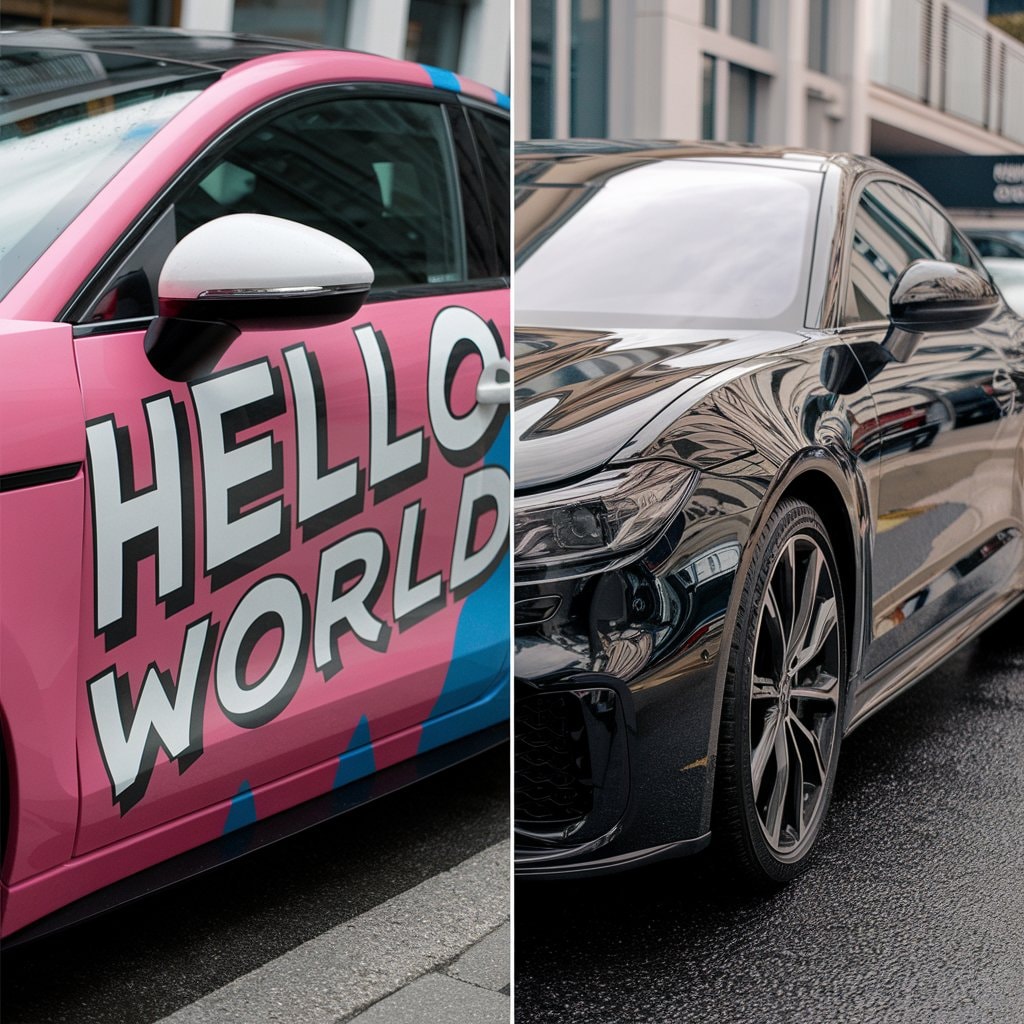
The longevity of ceramic coatings on vehicle surfaces
The lifespan of ceramic coatings on car surfaces impresses many. Owners can expect these coatings to last up to five years, sometimes even longer, with proper maintenance. This durability comes from the coating’s strong bond with the vehicle’s paint, forming a protective layer that is hydrophobic and resistant to various environmental pollutants.
Protecting your car’s paint goes beyond just keeping it clean; it involves safeguarding against scratches, UV rays, and chemical stains. Ceramic coatings offer this level of protection by providing a barrier that is much thicker than traditional wax treatments.
Regular washing and basic upkeep will help maintain the coating’s effectiveness over time, ensuring that cars look newer for more extended periods without needing constant touch-ups or reapplications.
Durability and maintenance of paint protection film
Moving from the resilience of ceramic coatings, paint protection film (PPF) offers a unique shield for cars. Owners value PPF for its ability to guard against scratches and environmental abuse.
This film is virtually invisible and adheres directly to the car’s exterior. It acts as a defensive layer that prevents damage from rock chips, UV rays, and minor abrasions.
Maintaining PPF involves simple steps to ensure it lasts long. Regular washing helps keep dirt and debris away, which could wear down the film over time. For deeper cleans, using mild soap with water works well without harming the PPF’s integrity.
Professionals recommend applying a new layer every five years or so to maintain optimal protection. With proper care, paint protection film keeps cars looking newer longer, offering superior protection against everyday wear and tear.
Factors influencing the lifespan of car wraps and coatings
The lifespan of car wraps and coatings depends on several factors. First, the quality of the material plays a crucial role. Higher-quality paint protection film (PPF) and ceramic coatings often last longer because they can better withstand environmental factors.
Secondly, professional installation makes a difference. Car owners who choose experienced professionals to apply ceramic coatings or ppf can expect superior protection against scratches and enhanced longevity.
Maintenance is another crucial factor; regular cleaning and proper care extend the durability of both wraps and coatings.
Exposure to sunlight is a big concern as well. UV rays can degrade car wraps over time, causing them to fade or peel. Similarly, rock chips pose a threat by creating minor damages that can escalate if not addressed promptly.
For those living in harsh climates or frequently driving on rough roads, choosing thicker PPF films might offer better defense against such damage. Ultimately, selecting between paint protection film and ceramic coating comes down to weighing these influencing aspects alongside personal preferences for vehicle care.
Conclusion
Selecting a protective treatment for your car’s paintwork, such as car wrap, ceramic coating, or PPF, depends on individual needs and preferences. Each alternative provides adequate protection while serving distinct roles.
Car wraps help avoid scuffs and environmental harm and can totally transform your car’s look. Ceramic coatings establish a water-repelling barrier that guards against pollutants, rendering upkeep simpler due to its self-cleaning characteristics.
Paint Protection Film (PPF) excels due to its thickness and self-repairing elements, offering superior shielding from stone chips and UV rays.
The most effective method for top-notch car paint protection is to use a combination of PPF and ceramic coating. This method guarantees that your vehicle enjoys the sturdiness of PPF and the shine and easy care offered by ceramic coatings.
A knowledgeable decision can help your car maintain its fresh appearance longer and retain its value with time. Keeping in mind personal requirements such as environmental damage resistance or a desire for a visual overhaul will steer you in the direction of the most suitable protection for your prized automobile.

